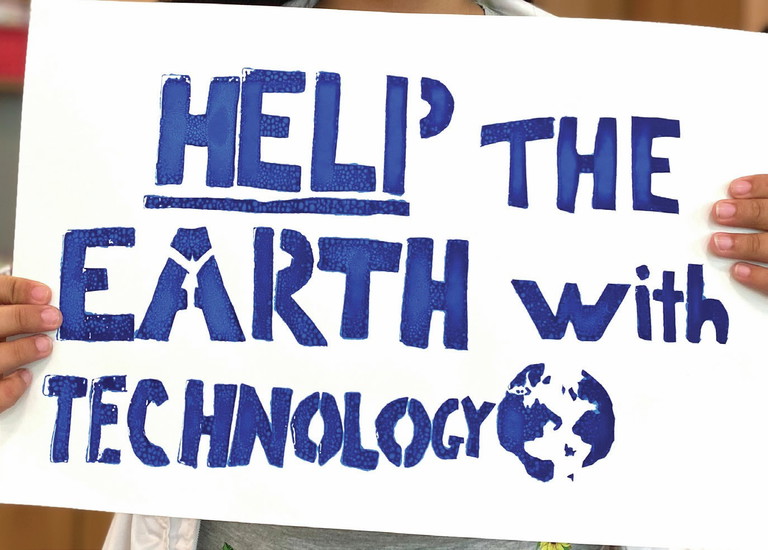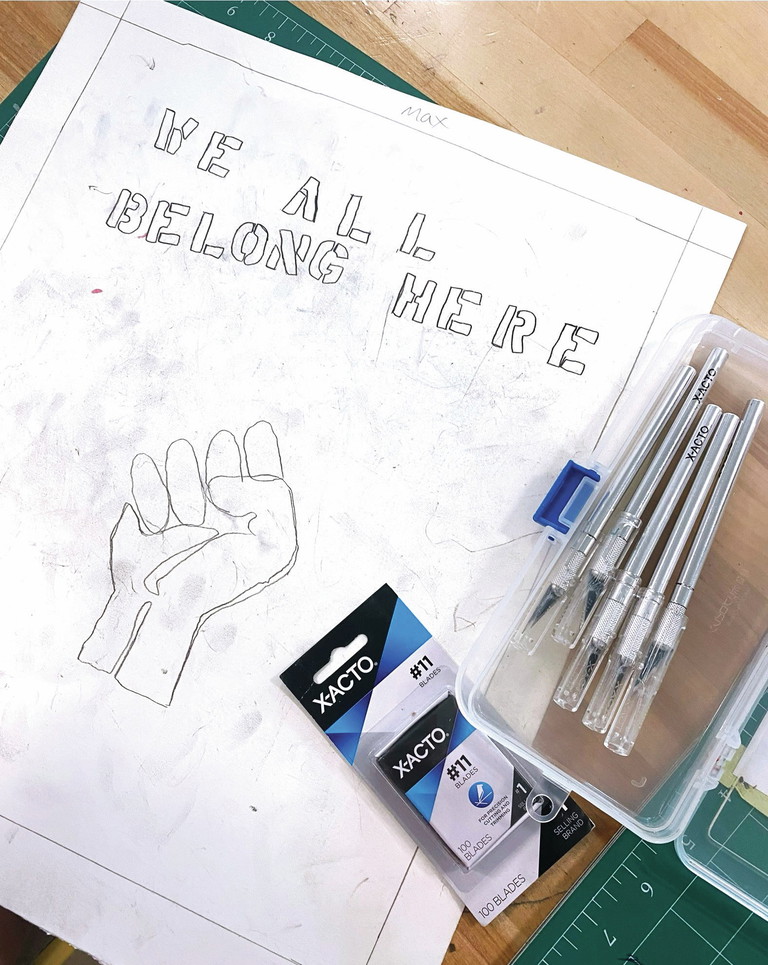ELEMENTARY

América S., Help the Earth with Technology, grade five.
Ariel Kay
Effective art education guides students to think critically about the world around them. Students learn to analyze, deconstruct, question, wonder, and imagine. When educators ask students what they desire to understand about the world and what they seek to change, we open up young minds to the possibility of positive social change.
Project Focus
Examine artwork and political posters from artists who advocate for a cause, such as activists Melanie Cervantes and Jesus Barraza of the graphic arts collaboration Dignidad Rebelde (see Resources). Discuss how these artworks were created with connections to communities and demands for justice.
Introduce terms such as community, advocate, culture, ethnicity, and identity, and discuss how these artists implement them in their work. I use the following definition for identity: who you are, how you view yourself, how the world views you, and who you hope to be.
When educators ask students what they desire to understand about the world and what they seek to change, we open up young minds to the possibility of positive social change.
Selecting a Community Issue
Students are asked to choose a topic that interests them based on their experiences in their communities (local or global). This topic becomes their community issue to address. Students can also choose something positive within their community in an effort to make this curriculum more asset-based.
Once students have chosen or created a community solution to their topic, they synthesize their ideas into a slogan through class discussions, peer collaboration, and teacher feedback. Some questions I use to inspire students include:
- Who is your community? What does your community need?
- What makes you sad or mad in the world? What brings you joy?
Stencil Compositions
After their slogans are formulated, students receive 12 x 18" (30.5 x 46 cm) mixed-media paper to create a giant stencil for silkscreen printing. Using rulers, students mark a border on all sides about 1" (2.5 cm) wide to avoid cutting too close to the edges. Students choose landscape or portrait orientation and brainstorm their composition, deciding whether to have their text above, below, or split around their images. We look back at the Dignidad Rebelde posters for examples and inspiration.

Preview Mode - Subscribe to unlock full content


SchoolArts Magazine
Inspiring Creativity Since 1901
A national art education magazine committed to promoting excellence, advocacy, and professional support for educators in the visual arts.
Categories
Explore our inspiring content by topic